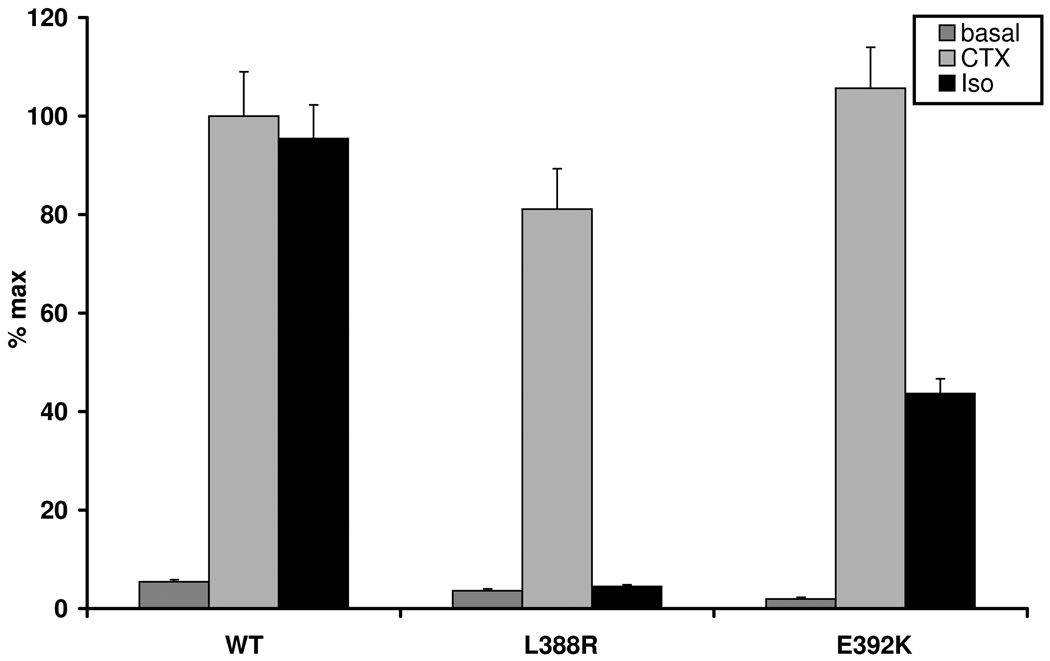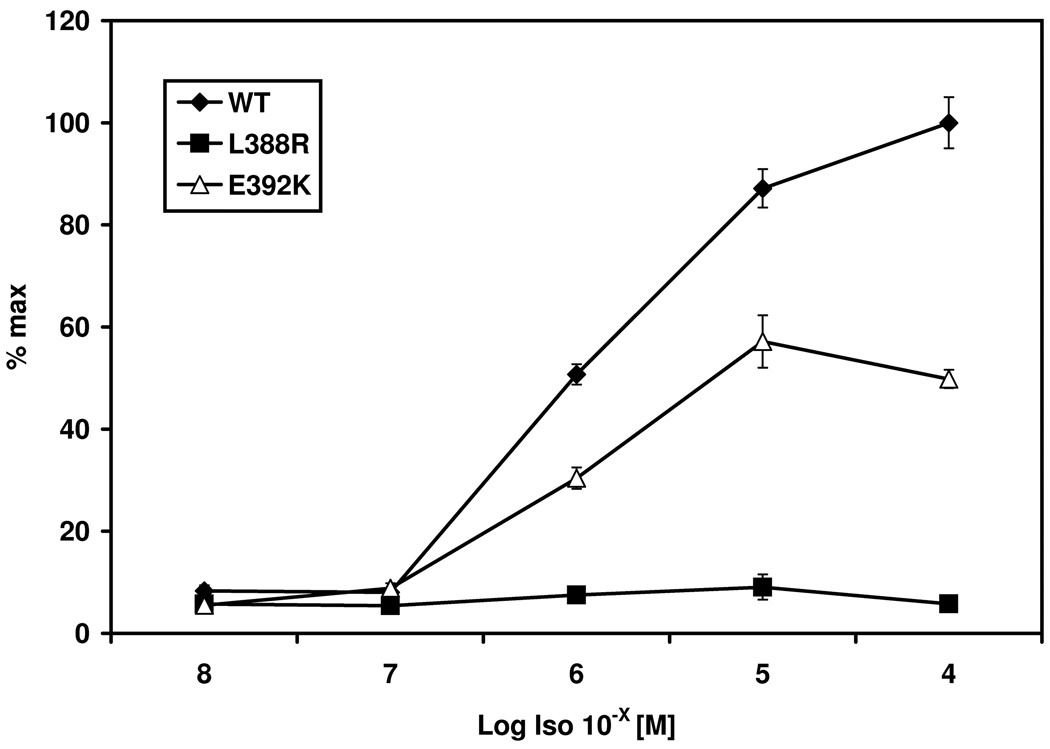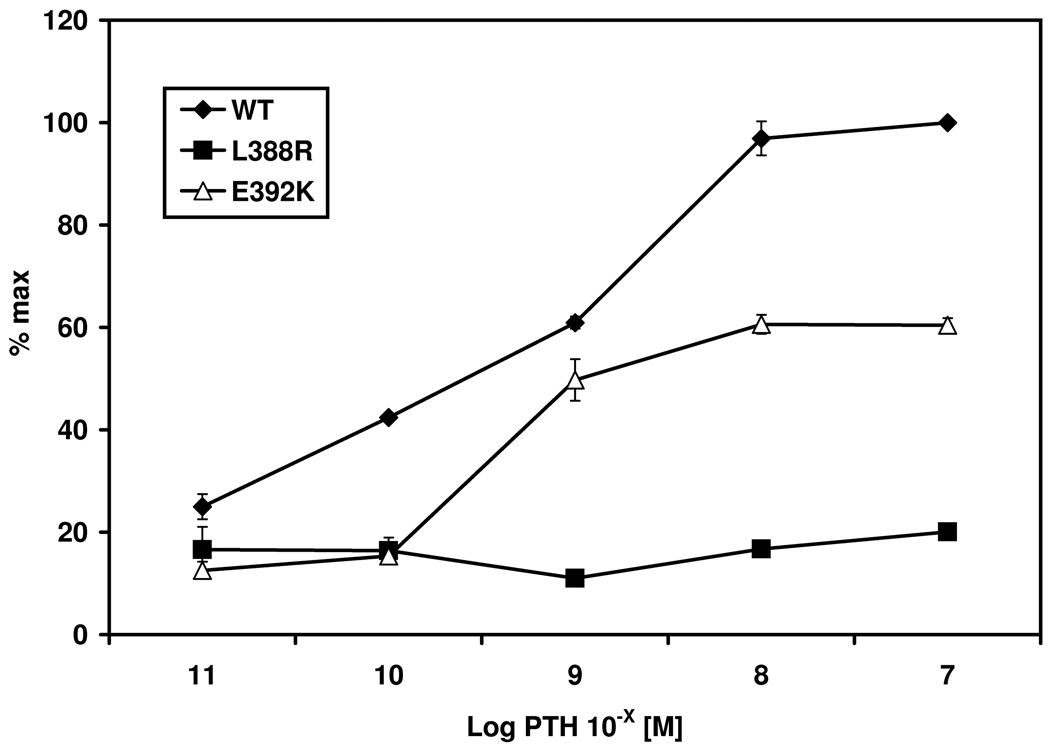Figure 1.
Stimulation of PHPIc associated missense mutants Gsα-388R and Gsα-392K. Panel a) shows cAMP accumulation of both transfected missense mutants after receptor mediated stimulation of the endogenous expressed β2-receptor due to Isoproterenol compared to receptor-independent stimulation due to CTX. The mutation p.L388R results in a loss of receptor-mediated stimulation despite normal receptor-independent activation compared to the wild-type. The Gsα-392K mutant demonstrates a diminished activity after receptor-mediated stimulation, although the receptor-independent stimulation is comparable to that of the Gsα-wild-type. % max: maximal response after stimulation of the Gsα-wild type with CTX. Panel b) Different concentrations of Isoproterenol (Iso) ranging from 10−8 to 10−4 M lead to a dose dependent stimulation of the β2 receptor in the wild-type and the Gsα-392K mutant. The Gsα-388R mutant failed to induce intracellular cAMP synthesis. Panel c) Similar results are shown after cotransfection with the PTHR: incubation with various concentrations of human PTH ranging from 10−11 to 10−7 M lead to a dose dependent response for the wild-type, and the Gsα-392K mutant, whereas the Gsα-388R-mutant does not show any response.



